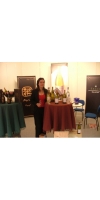Wine from Ebano

The Ebano Estate
Over the past few years Adegas Valminor (D.O. Rías Baixas) has been putting together a D.O. Ribera del Duero, initiative which began with the acquisition of prime vineyards in the area around Quintana del Pidio and Gumiel del Mercado. After extensive work on the vineyards and the construction of the necessary facilities, the first Ebano (crianza 2001) was produced. In Spanish, the word ébano means ebony, the hard black wood used in making musical instruments such as clarinets. The name evokes the deep dark color of the wine.
The Ebano Vineyards
The holdings amount to a total of 43 hectares (106 acres), separated in 7 different parcels. The vines are 100% Tempranillo. The older plantings (23 years) are pruned in the traditional goblet or head-trained fashion. Later plantings are trained on wires and are some 15 years old. The soils in the area are generally a mix of sand/gravel and clay/limestone.
No products found
- back
Selected Options
Wineries
Categories
Pricing
Countries
Regions
Grape Types
Wineries
Organic/Free Shipping
Domaine Michel Magnien has evolved into a Burgundy producer of a singular style and philosophy from cellars located in the village of Morey-Saint-Denis. In 1993, Frédéric Magnien persuaded his father Michel to begin domaine bottling. The domaine is now certified biodynamic by Demeter and the wines are produced without the use of new oak.
The domaine’s 45 acres are spread across the villages of Morey-Saint-Denis, Gevrey-Chambertin, Chambolle-Musigny, and Vosne Romanée, with holdings in several premier cru and grand cru vineyards. These include the grand crus Clos de la Roche, Clos Saint-Denis, and Charmes-Chambertin. Frédéric Magnien maintains an average vine age of 50 years.
Morey-Saint-Denis 1er Cru "Climats d'Or" is a blend of five premier crus in the village of Morey-Saint-Denis: Cheseaux, Charrières, Clos Baulet, Chaffots, Monts Luisants. The wine was fermented with indigenous yeasts in stainless steel tanks followed by several months aging in half terracota amphora & half used pièce. Around 20% whole clusters were included in the cuvée.
Morey-Saint-Denis 1er Cru "Climats d'Or" combines the structure of Gevrey-Chambertin with the perfume of Chambolle-Musigny. This wine shows fresh red berries on the nose with notes of violets, spice, and earth. Old vines and heavier soils give this wine weight and richness on the palate.
Red Burgundy might be the world’s most flexible food wine. The wine’s high acidity, medium body, medium alcohol, and low tannins make it very food friendly. Red Burgundy, with its earthy and sometimes gamey character, is a classic partner to roasted game birds, grilled duck breast, and dishes that feature mushrooms, black truffles, or are rich in umami.
Ferme Blanche Cassis Blanc Excellence is made from 40% Marsanne, 20% Ugni Blanc, 20% Clairette, 10% Sauvignon Blanc and 10% Bourboulenc.
The wine has a pale golden color and offers subtle aromas of citrus fruits, peach and apricot, and floral notes of acacia and linden. Crisp and lively on the palate, good tension and length and a refreshing finish.
Pair with sea stews, shellfish, traditional fish and chips, octopus salad.




